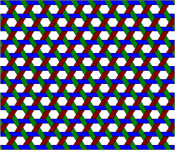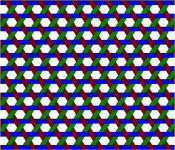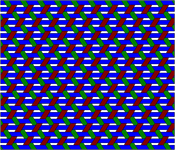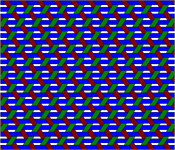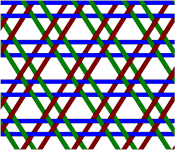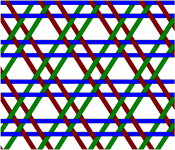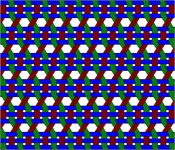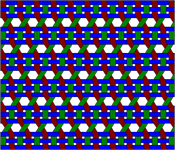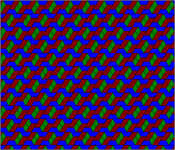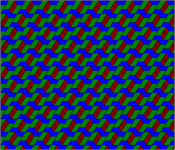
Triaxial Fabric Patterns

Structure: The basis for the stiffness in triaxial fabrics is the locked intersection. In the above drawing, the first shows one yarn, for instance the blue one, being constrained from moving upward by the intersection of the red and green yarns. Expanding this intersection to two, now the blue yarn is constrained from moving vertically in either direction. Finally extending the locked intersection configuration to a full unit shows all the yarns constrained from moving in any direction. The locked intersection characteristics and how they affect the performance of triaxial fabric is determined by the size of the yarns and the pitch distance between them. By modifying either of these variables, an amount of extensibility can be designed into the woven fabric, giving a truly engineered fabric structure.
